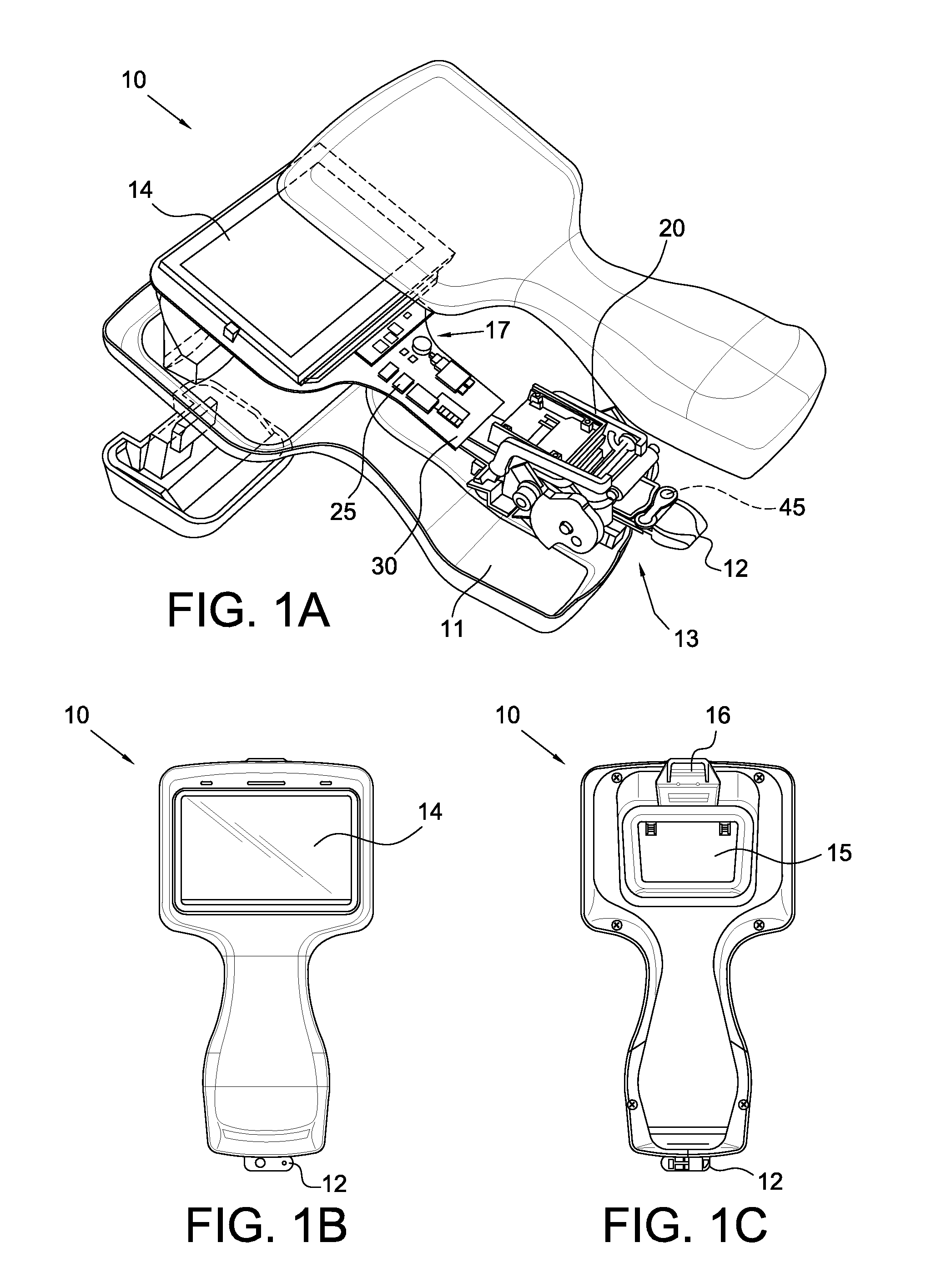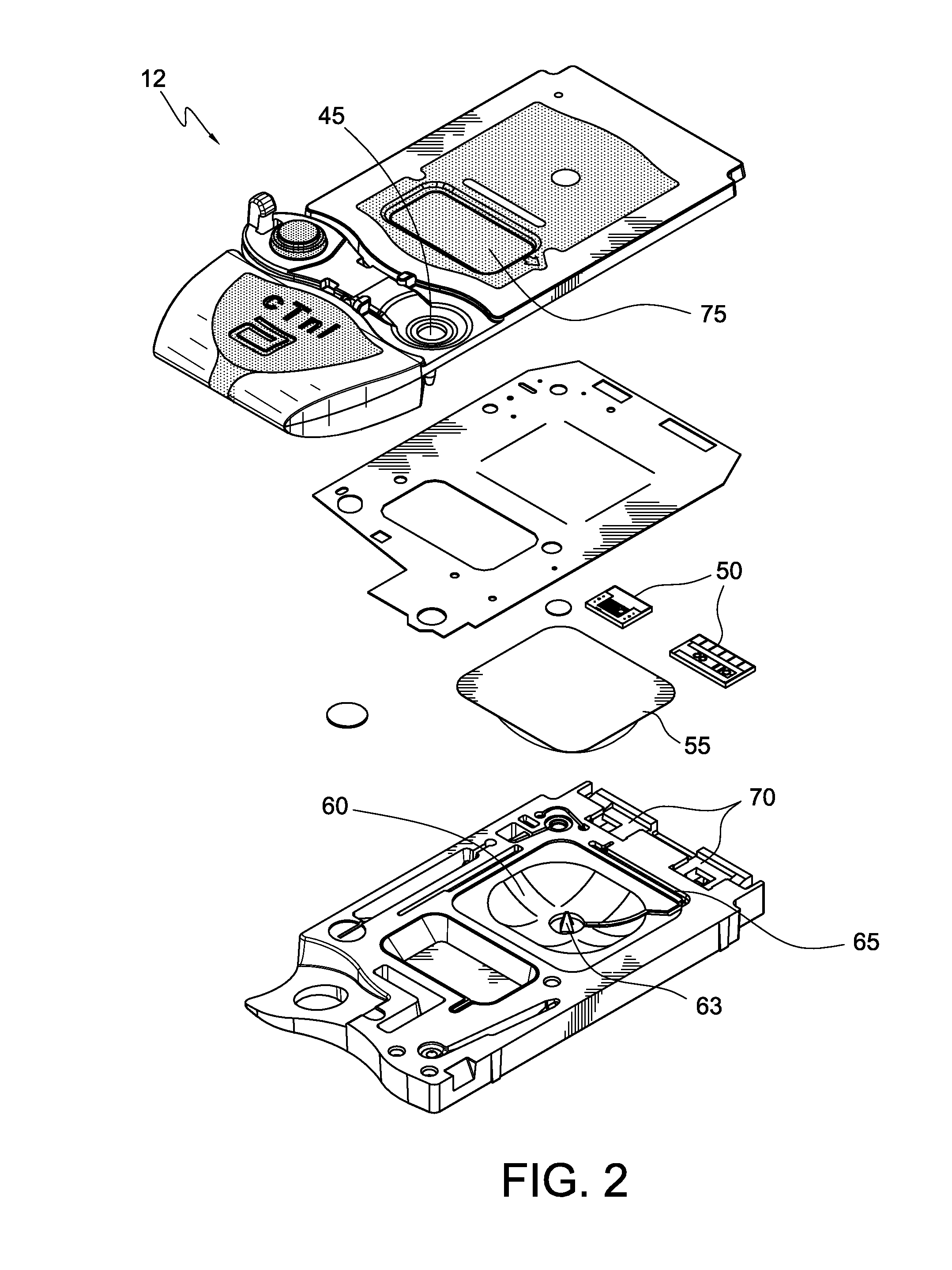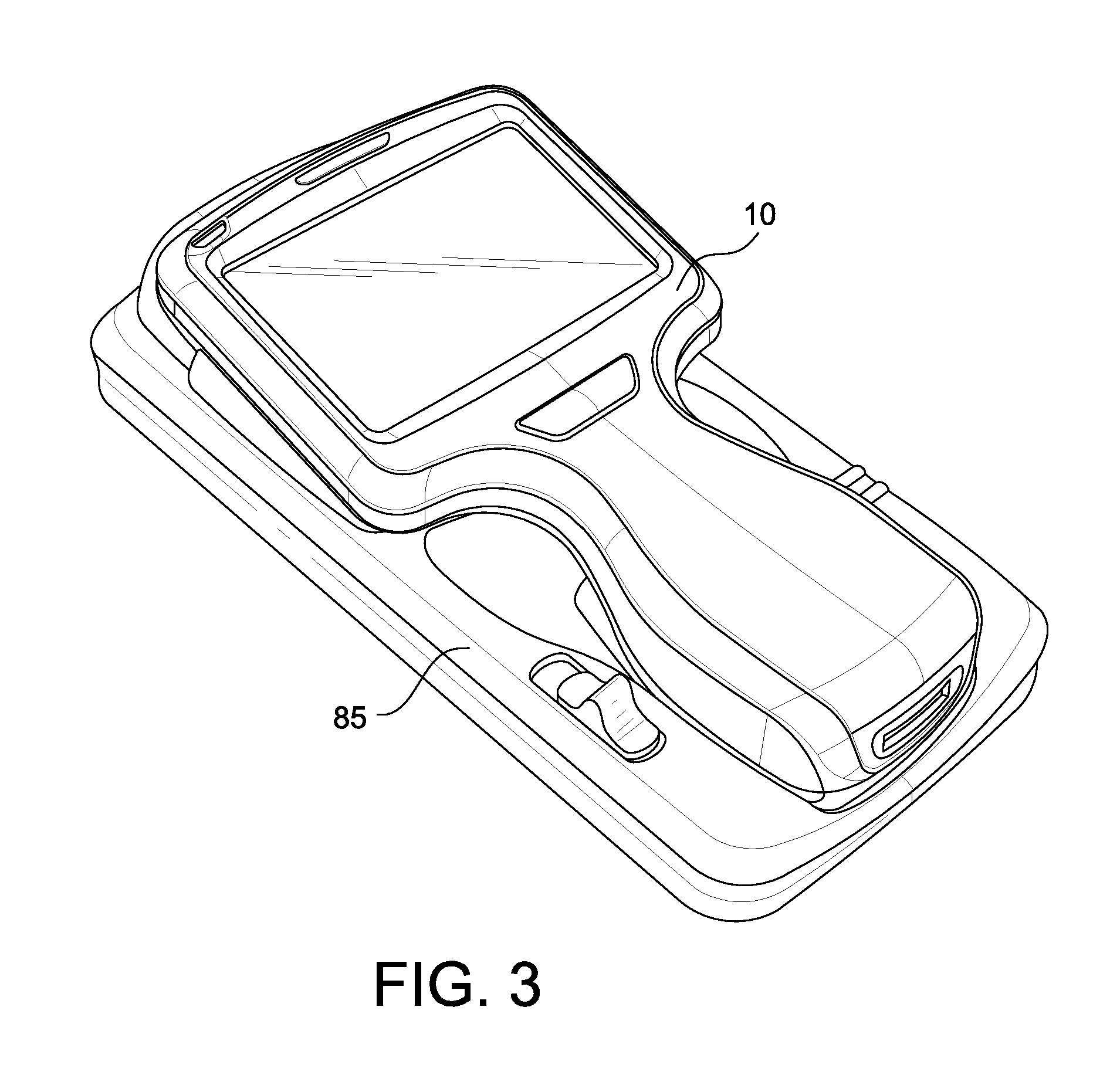Spatial Orientation Determination In Portable Clinical Analysis Systems
a clinical analysis and orientation determination technology, applied in the field of analytical testing devices, can solve the problems of inability to offer rapid turn-around of results to enable more immediate medical decisions, affecting the efficiency of the laboratory,
- Summary
- Abstract
- Description
- Claims
- Application Information
AI Technical Summary
Benefits of technology
Problems solved by technology
Method used
Image
Examples
example 1
[0126]The present example characterizes the effect that analyzer orientation may have on a hematocrit assay measurement especially for blood samples with a low hematocrit and a high sedimentation rate.
[0127]Patient blood samples from a variety of units in a hospital were collected. Upon the arrival of each sample to the lab, approximately 1 ml of blood was drawn from the sample tube and placed in a plain tube for use in the present example. Relevant sample identification information including sample code and unit code were recorded. The sample was mixed with a roller mixer for at least five minutes and then tested with four analyzers, two of which were positioned at level (0°) and two positioned at a 45° pitch angle. The cartridges used for the study were CHEM6+ (which measures glucose, urea, sodium, potassium, chloride and hematocrit) and CHEM8+ (which measures glucose, creatinine, urea, total carbon dioxide, sodium, potassium, calcium, chloride and hematocrit.
[0128]If the hematocr...
example 2
[0131]The present example characterizes the effect pitch angle and / or roll angle may have on a hematocrit assay measurement especially for blood samples with a low hematocrit and a high sedimentation rate.
[0132]Patient blood samples were collected. Each sample was centrifuged at 5000 rpm for 5 minutes to separate plasma and blood cells. The plasma and blood cells were then reconstituted to obtain a sample of 18% PCV and ±2% PCV. The sample was then tested with analyzers at a vertical pitch between +45° and −45°. If the sample exhibited significant orientation effect, as described above with respect to Example 1, then the sample was set aside for further testing. The further testing included testing the sample with analyzers at a 0° and ±20° pitch angle (−20° referring to a head-down tilt and +20° referring to a head-up tilt), 0° and ±20° roll angle (−20° referring to a left angle tilt and +20° referring to a right angle tilt), and a compound angles (pitch & roll). The cartridges use...
PUM
 Login to View More
Login to View More Abstract
Description
Claims
Application Information
 Login to View More
Login to View More - R&D
- Intellectual Property
- Life Sciences
- Materials
- Tech Scout
- Unparalleled Data Quality
- Higher Quality Content
- 60% Fewer Hallucinations
Browse by: Latest US Patents, China's latest patents, Technical Efficacy Thesaurus, Application Domain, Technology Topic, Popular Technical Reports.
© 2025 PatSnap. All rights reserved.Legal|Privacy policy|Modern Slavery Act Transparency Statement|Sitemap|About US| Contact US: help@patsnap.com



